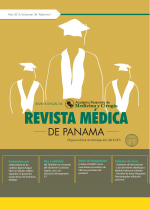La piel como un ecosistema: importancia del microbioma cutáneo
Autores/as
DOI:
https://doi.org/10.37980/im.journal.rmdp.2014165Resumen
La barrera cutánea es esencial para la función de protección de la piel y para esto se debe construir correctamente la envoltura cornificada. Además de esta barrera física, el sistema inmune innato y adaptativo en la piel constituyen una segunda línea de defensa contra los agentes patógenos del medio ambiente.
La piel se encuentra colonizada por una gran diversidad de microorganismos, tales como bacterias, hongos, ácaros y virus. Estos microorganismos constituyen el microbioma cutáneo y, en su mayoría, son inofensivos o incluso beneficiosos para el hospedero.
El microbioma constituye la verdadera primera línea de defensa de la piel contra las infecciones, debido a que los microorganismos patógenos deben primero competir con el microbioma antes de poder establecerse e infectar. La formación del microbioma de un organismo es regida por la ecología de la superficie de la piel, la cual es muy variable dependiendo de la topografía, de factores del hospedero y de factores exógenos ambientales.
La respuesta inmune del hospedero modula el microbioma de la piel; sin embargo, el microbioma también contribuye a la educación del sistema inmune, manteniéndole en estado de alerta, propiciando una respuesta más rápida ante cualquier infección.
Es primordial lograr una mejor comprensión de la relación del microbioma con el sistema inmune y de su rol en las enfermedades de la piel. Esto nos permitirá establecer terapias novedosas para estas enfermedades. Es vital recordar que, como en todo ecosistema, la clave para la buena salud de la piel está en mantener el balance.
The skin as an ecosystem: importance of skin microbiome.
Abstract
The skin barrier is essential to fulfill the protection function of the skin and for that it is important to correctly construct the cornified envelope. Besides this physical barrier, the innate and adaptive immune systems in the skin are a second line of defense against environmental pathogens.
The skin is colonized by a wide variety of microorganisms, such as bacteria, fungi, mites and viruses. These microorganisms are the skin microbiome and they are mostly harmless or even beneficial to the host.
The microbiome is the true first line of defense against skin infections because pathogens must first compete with the microbiome before they can settle and infect. The formation of the microbiome of an organism is governed by the ecology of the surface of the skin, which is highly variable depending on topography, host factors and environmental externalities.
The host immune response modulates the skin microbiome; however, the microbiome contributes to the education of the immune system, keeping it on alert and leading to a more rapid response to any infection.
It is essential to achieve a better understanding of the relationship between the microbiome and the immune system and its role in diseases of the skin. This will allow us to establish novel therapies for these diseases. It is vital to remember that, as in any ecosystem, the key to healthy skin is to keep the balance.
Keywords: microbiome, skin barrier, immune response.
Publicado
Número
Sección
Licencia
Derechos autoriales y de reproducibilidad. La Revista Médica de Panama es un ente académico, sin fines de lucro, que forma parte de la Academia Panameña de Medicina y Cirugía. Sus publicaciones son de tipo acceso gratuito de su contenido para uso individual y académico, sin restricción. Los derechos autoriales de cada artículo son retenidos por sus autores. Al Publicar en la Revista, el autor otorga Licencia permanente, exclusiva, e irrevocable a la Sociedad para la edición del manuscrito, y otorga a la empresa editorial, Infomedic International Licencia de uso de distribución, indexación y comercial exclusiva, permanente e irrevocable de su contenido y para la generación de productos y servicios derivados del mismo. En caso que el autor obtenga la licencia CC BY, el artículo y sus derivados son de libre acceso y distribución.






